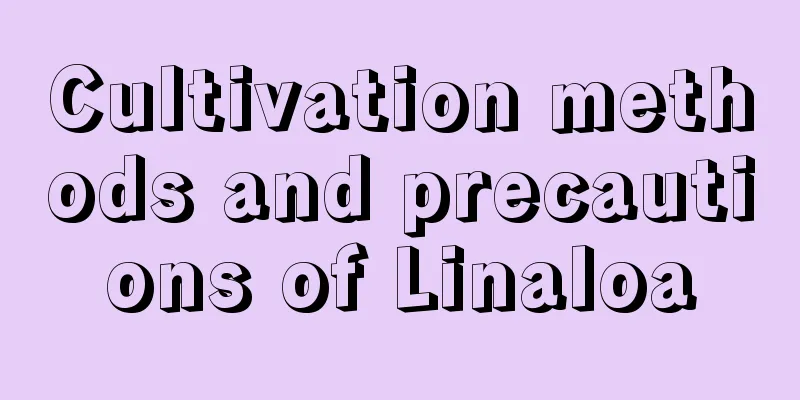How to hydroponically cultivate Guangdong Evergreen

Guangdong Evergreen Hydroponics: Root Washing MethodThe root washing method can be used to hydroponically cultivate Guangdong Dieffenbachia all year round, but the best time is spring and autumn. Because the temperature is suitable at this time, Guangdong Dieffenbachia grows more vigorously, and potted plants can easily adapt to hydroponic conditions after root washing. Select Guangdong evergreens that are strong, have taken shape after soil cultivation (or other substrate cultivation), and have ornamental value. Remove the plant from the pot, remove the soil around the roots, rinse the soil in water, and cut off some old roots. To prevent root rot in the early stage of hydroponics and promote the formation of new roots, 0.5% potassium permanganate can be used for soaking and disinfection. Place the treated Guangdong Evergreen plant into the prepared container, inject tap water to cover 2/3 to 1/2 of the root system, and cultivate new roots. Guangdong Evergreen Hydroponics: Water Insertion MethodThe cultivation of Guangdong Evergreen by water cuttings is generally carried out in spring and autumn, because the temperature required for rooting cannot be reached in late autumn and early spring, and the cuttings are easily infected by microorganisms and rot in the high temperature season of summer. Of course, under the conditions of increasing or decreasing temperature, Guangdong Evergreen can be water-cut all year round. When water-inserting, take thick branches, retain the aerial roots on the nodes, cut into small sections of about 10 cm, and disinfect the cut ends with potassium permanganate (you can dip them in rooting powder). After the juice flowing out of the wound has dried, insert it into plain sand or water and maintain a high air humidity at around 25°C. It will take 20 days for it to take root and sprout, forming a plant material suitable for hydroponics. During the healing and rooting period of water cuttings, the plants breathe more vigorously and must have sufficient oxygen supply. Therefore, the water should be changed frequently at the beginning to keep the water clean and meet the cuttings' need for oxygen. When changing the water, the cuttings and the container should be rinsed with clean water, especially the cut ends. After rooting, they can be transferred to normal water culture and care. Guangdong Dieffenbachia hydroponics: division methodDivision is usually carried out when growth begins in spring. Spring division reduces damage to the plants and enables the divided plants to resume normal growth more quickly. When dividing Guangdong evergreen, first remove the plant from the pot, shake off most of the potting soil, straighten out the tangled roots, expose the tiller seedlings and roots, then use a sharp knife to divide it into several clumps from the stem of the mother plant according to the required size, disinfect the wound (apply wood ash or sulfur), clean it, and then cultivate it in water. |
<<: How to grow green radish in hydroponics
>>: What are the characteristics of hydroponic plants
Recommend
Are succulents harmful to the human body?
1. Is succulent harmful to the human body? To ans...
How often should I water the cactus? How much water should I water it with?
How often should you water a cactus? The amount o...
How to propagate strawberries and what to pay attention to
Strawberry reproduction method There are four way...
What are the cultivation methods and precautions of purple bamboo plum
Introduction of Purple Bamboo Plum Purple Bamboo ...
Leek growth environment conditions and characteristics
Leek growth environment conditions and requiremen...
How and when to plant mustard? Which month is best for planting?
Suitable planting time for mustard The planting t...
How and when to plant bang bang vegetables
It is not difficult to grow bangbangcai. First, y...
How to trim sea tiger orchid to make it look good
How to prune the branches of Sea Tiger Orchid Whe...
When is the best time to sow kale?
Kale sowing time Kale is a herbaceous plant of th...
What kind of soil and pots are suitable for Clivia (the best soil preparation method for potted Clivia)
How to choose a pot for Clivia ①The flower pot mu...
Family breeding method of Ji Qiuli
Soil requirements Like other succulents, Cassia b...
What are the common varieties of pomegranate flowers?
Pomegranate The pomegranate fruit is mainly for p...
How to propagate Ice Lantern Jade Dew
1. Division propagation To propagate Ice Lantern ...
What is the best month to plant South Claw?
When to plant pumpkin Pumpkin is usually planted ...
How to water cosmos?
Watering before sowing: Be sure to water the soil...









